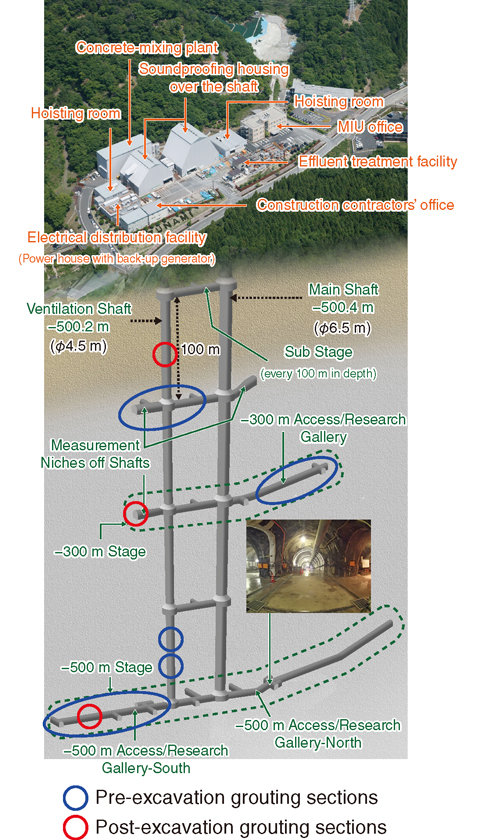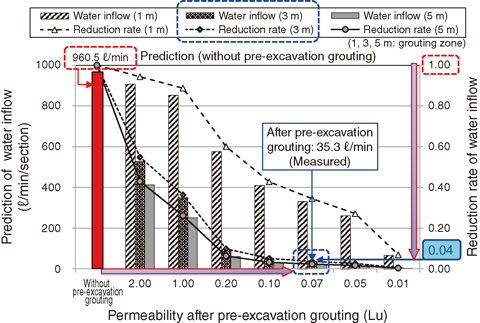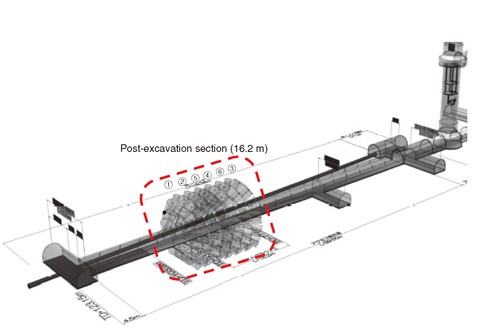
Fig.8-14 Layout of the Mizunami Underground Research Laboratory

Fig.8-15 Estimated water inflow depending on the pre-excavation grouting in the −500 m Access/Research Gallery-South

Fig.8-16 Layout of the post-excavation grouting section in the −500 m Access/Research Gallery-South
Tono Geoscience Center is managing a geoscientific research and development (R&D) project, namely the “Mizunami Underground Research Laboratory” (MIU) Project. The MIU Project was launched as a generic underground research laboratory in a crystalline rock environment under an R&D program to establish a scientific and technical basis for geological disposal of high-level radioactive waste (HLW). MIU has clearly been distinguished from any actual disposal facilities. MIU is the first Underground Research Laboratory in Japan. The results will be utilized to provide basic information for the final HLW geological disposal project and to draw up national safety regulation standards.
To mitigate potential excess groundwater inflow, pre-excavation grouting of open fractures in the rock mass was performed (Fig.8-14; pre-excavation grouting was conducted before the excavation at −200 m, −300 m, −400 to −460 m, and −500 m depths). In planning the construction, the targeted reduction in water inflow was established by theoretical analysis of the groundwater flow in terms of the bedrock conditions. Actual inflows indicate that pre-excavation grouting was successful and the targets were achieved. Thus, the results indicate that the methodology is effective in reducing water inflow and is applicable deep underground and under high-groundwater pressure conditions (Fig.8-15).
Then, post-excavation grouting work with six fans was conducted at a 16 m section of the pre-excavation grouting area for further reducing the inflow at the −500 m Access/Research Gallery-South in order to develop an appropriate post-excavation grouting design method in the deep underground (Fig.8-16). Pre- and post-excavation grouting measures were successful in reducing groundwater inflow at the −500 m Access/Research Gallery-South. These waterproofing experiences must be fruitful for advancing the present grouting technology in the deep underground. Therefore, it can be suggested that there is still more potential to reduce the water inflow.